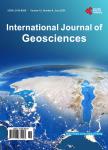The Temporal Variability of the Freshwater Discharge and Water Levels at the Patos Lagoon,Brazil
作者机构:Instituto de MatematicaEstatistica e FisicaUniversidade Federal do Rio GrandeRio Grande do SulBrazil
出 版 物:《International Journal of Geosciences》 (地球科学国际期刊(英文))
年 卷 期:2012年第3卷第4期
页 面:758-766页
学科分类:1002[医学-临床医学] 100214[医学-肿瘤学] 10[医学]
主 题:Freshwater Discharge El Nino La Nina Wavelet Analyzes
摘 要:The direct influence of freshwater discharge along the coastal regions is observed in several processes following a wide spectrum on spatial and temporal variability. The knowledge of relative importance of this physical forcing is fundamental by the correct management of the coastal sites and the understanding of consequences associated with processes of climatic order is one point deserves some investigation. The major part of the studies in the Patos Lagoon, located in the southernmost part of Brazil, is limited to investigate the effects in synoptic time scales. In this way, the objective of this study is to investigate the long term variability pattern of the Patos Lagoon discharge and water levels indentifying long term trends through wavelet analysis. The results indicated that El Ni?o (La Ni?a) events promote the intensification (decrease) of the freshwater intensity in the principal river tributaries of the Patos Lagoon following scales from 16 to 120 months (from 1.3 to 10 years). The most energetic cycle is centered in periods of 64 months (5.3 years). The longer events reflect the long term response of the non linear dynamics in Equatorial Pacific changing the precipitation pattern, principally during winter and at the end of spring and early autumn. The non-linear long term trend indicates a pattern with values of discharge normally above (below) the mean after (before) 1970’s. An increasing trend starting after 1970 possibly indicates a longer term cycle influencing the interannual variability of the Patos Lagoon discharge. The seasonality is maintained in climatic monthly means obtained after and before 1970’s, but, with mean increase around 364 m3·s?1 in freshwater discharge with reduced amplitude of the seasonal cycle.



